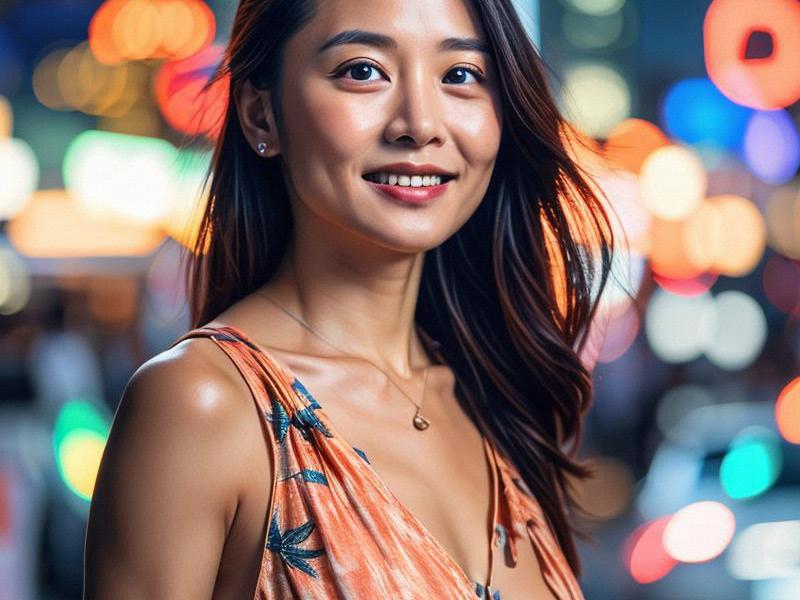This article delves into the concept of "Shanghai Beauties" from a cultural perspective, exploring their historical evolution, influence on fashion and lifestyle, and their symbolic significance in modern Shanghai society.

In the heart of China's bustling metropolis, Shanghai, there exists a term that has captured the imagination of many: "Shanghai Beauties." This phrase is not merely a reference to physical attractiveness but also a profound symbol of elegance, sophistication, and cultural identity. The concept of "Shanghai Beauties" has evolved over time, reflecting the city's rich history, rapid modernization, and its unique position as a global cultural hub.
The historical roots of "Shanghai Beauties" can be traced back to the late 19th and early 20th centuries, during the era of the International Settlement and French Concession. Shanghai was a melting pot of cultures, where Chinese, Western, and other Asian influences converged. This cosmopolitan environment gave rise to a new class of women who were educated, independent, and fashion-forward. These women, often referred to as "Shanghai Flowers" or "Shanghai Beauties," were known for their graceful demeanor, impeccable taste, and progressive attitudes.
One of the most iconic figures of this era was the legendary Soong sisters—Mei-ling, Ching-ling, and Ai-ling. These women not only epitomized the essence of "Shanghai Beauties" but also played pivotal roles in China's political and social history. Mei-ling Soong, for instance, was the wife of Chiang Kai-shek and a prominent figure in Chinese politics. Her eloquence, intelligence, and grace made her a symbol of modern Chinese women.
The "Shanghai Beauties" of this period were not just confined to the elite; they also included actresses, singers, and socialites who graced the stages of Shanghai's famous theaters and cabarets, such as the Canidrome and the Paramount Ballroom. These women, often portrayed in films and literature, became icons of beauty and style, inspiring generations of young women to emulate their elegance and confidence.
上海龙凤419油压论坛 The influence of "Shanghai Beauties" extended beyond the realm of personal appearance; it also encompassed fashion, lifestyle, and cultural attitudes. The city was a trendsetter, known for its vibrant fashion scene and innovative designs. The cheongsam (qipao), a traditional Chinese dress, underwent a transformation in Shanghai, becoming more form-fitting and stylish. This new style, often referred to as the "Shanghai-style qipao," became a symbol of modernity and femininity.
In addition to fashion, "Shanghai Beauties" were known for their love of art, music, and literature. They frequented salons, attended exhibitions, and supported local artists, contributing to the city's rich cultural tapestry. This appreciation for the arts not only enhanced their own cultural素养气质 (temperament or aura) (temperament or aura), but also helped shape the cultural identity of Shanghai as a cosmopolitan city.
The mid-20th century brought significant changes to Shanghai and its perception of beauty. The Communist Revolution of 1949 marked the end of the International Settlement and the French Concession, leading to a shift in societal values. The glamorous image of "Shanghai Beauties" gave way to a more utilitarian and egalitarian ideal, emphasizing collective effort and modesty over individualism and luxury.
However, the spirit of "Shanghai Beauties" did not disappear entirely. It evolved, adapting to the changing times while retaining its core essence of elegance and sophistication. In the post-revolutionary era, Shanghai women continued to embody a unique blend of tradition and modernity, navigating the complexities of a rapidly changing society.
上海龙凤419会所
The economic reforms and opening up of China in the late 20th century brought a resurgence of interest in the "Shanghai Beauties." As Shanghai reemerged as a global financial and cultural center, the concept of "Shanghai Beauties" was revitalized, reflecting the city's renewed confidence and dynamism. Today, "Shanghai Beauties" are not just a historical relic but a living, breathing phenomenon that continues to inspire and captivate.
Modern-day "Shanghai Beauties" are characterized by their multifaceted personalities and diverse backgrounds. They are successful professionals, entrepreneurs, artists, and social activists, embodying the best of both traditional Chinese values and contemporary global influences. Their beauty is not confined to physical appearance but extends to their intelligence, creativity, and resilience.
In the fashion world, "Shanghai Beauties" continue to set trends, blending traditional Chinese elements with international styles. Designers from Shanghai are renowned for their innovative approaches, creating garments that celebrate the city's rich cultural heritage while embracing modern aesthetics. The city's fashion week has become a major event, attracting global attention and showcasing the latest in haute couture and ready-to-wear collections.
上海花千坊龙凤 Beyond fashion, "Shanghai Beauties" are making their mark in various fields, from business and technology to the arts and philanthropy. They are role models for young women, demonstrating that success and beauty can coexist, and that true elegance comes from a combination of inner strength and outer grace.
The symbolic significance of "Shanghai Beauties" extends beyond the individual; they represent the spirit of Shanghai itself—a city that has endured and thrived through centuries of change. They embody the resilience, adaptability, and creativity that have defined Shanghai's history, making it one of the most dynamic and influential cities in the world.
In conclusion, "Shanghai Beauties" are more than just a cultural phenomenon; they are a testament to the city's rich history and its enduring appeal. From their historical roots in the cosmopolitan era of the early 20th century to their modern-day counterparts who continue to inspire and captivate, "Shanghai Beauties" represent the perfect blend of tradition and modernity, elegance and sophistication, and strength and grace.
As Shanghai continues to evolve as a global hub, the concept of "Shanghai Beauties" will undoubtedly remain a vital part of its cultural identity, serving as a reminder of the city's unique heritage and its aspirations for the future. Whether through fashion, art, or personal achievements, "Shanghai Beauties" will continue to shine, embodying the spirit of a city that is as beautiful and dynamic as the women who call it home.